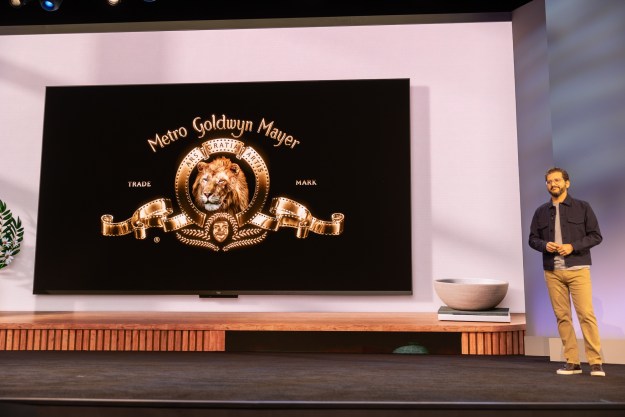
Well-meaning, barnwood-upcycling, urban-hop-farming Portlanders that they were, they slid a couch in front of a wall instead. No one ever sat there.
Well, almost no one. On the rare occasion someone from the house ventured over to the brick-like Ikea slab of a sofa, it was to read a book on their own or watch Netflix … on an iPad. How social.
A truly smart TV is collaborative.
Our heroic conversation crusaders had it backwards: It’s more tech, not less, that can make your living room a place to congregate, share ideas, and be social. And a smarter TV is a good place to start.
TV has a well-earned reputation for being a mind-melting, conversation-killer that sucks the attention of everyone in the room in like a black hole. Who hasn’t caught themselves at a bar gazing up at a TV playing Duck Dynasty in the corner because … oh look, moving colors!
I get the neophyte reaction to this problem. Give me a wood fire over just about any other form of entertainment. But if I’m going to have a TV in my living room — and I do because my landlord doesn’t like me setting fires on the floor — it’s going to do a lot more than flip between channels.
What currently lurks below my living-room television is an ancient PC from about 2006, running Windows 8, and a Lenovo media controller. And it has made my living room a better place to fill with friends and talk, not just a spot to stare at Black Mirror on Netflix while I stuff my face alone on a Tuesday night. (Though I do that too.)

I ended up with this setup years ago for a reason that had nothing to do with the noble goal of sharing: The earliest set-top boxes like Roku and Apple TV couldn’t do what I wanted. Sure, I could get Netflix, but some stuff just demanded a computer. Like South Park, the live comedy specials Louie C.K. lets you download for $5 apiece, and those episodes of Game of Thrones that mysteriously arrived on a thumb drive.
A computer could play all of those things, but the best applications have been those I never imagined when I heaved this hulk under my TV. Friends take turns dialing up different songs on Spotify. Everyone wants to pitch their favorite YouTube video on the big screen. Before a night out, we can Yelp where we want to go — collectively on the big screen, instead of staring into our smartphones. When guests visit from out of town, the TV becomes a virtual wall map I can use to show them around town.
A truly smart TV is collaborative. My girlfriend and I just plotted most of an upcoming vacation on my TV, perusing destinations on Google Maps, previewing them through YouTube videos, browsing lodging on Airbnb, and looking up flights on Kayak. It can also be productive, like when I use it to look up recipes and reference them without washing my flour-caked hands, or watch instructional bike repair videos with my bike in front of me on the floor.
I still prefer my full PC to a true smart TV or set-top box, but off-the-shelf solutions are getting closer to doing all the things I want. WebOS has a slick full Web browser, Samsung’s Smart TVs come with a Skype app, and Amazon’s Fire TV even has party games like the classic You Don’t Know Jack trivia.
Yes, your TV could help you connect to family members across the country or get a party rolling.

It’s easy to fixate on tiny personal screens now, whether on smartphones or tablets or
So don’t brag that “you don’t watch TV” just because you do it through Netflix on an iPad in bed. Get a TV. A big one. One so big it consumes half the wall and has your friends joking that you’re overcompensating. Then connect a computer to it, put away the history textbook you were smugly pretending to read, crack a beer, and enjoy that sucker with friends.
Editors' Recommendations
- There’s only one streaming device that lets you escape ads
- Panasonic’s latest OLED TVs are the first with Amazon Fire TV built-in
- NFL buffering on YouTube TV? You’re not alone today
- Should you install beta updates for Apple TV 4K?
- Which streaming platform has the best screensavers?


